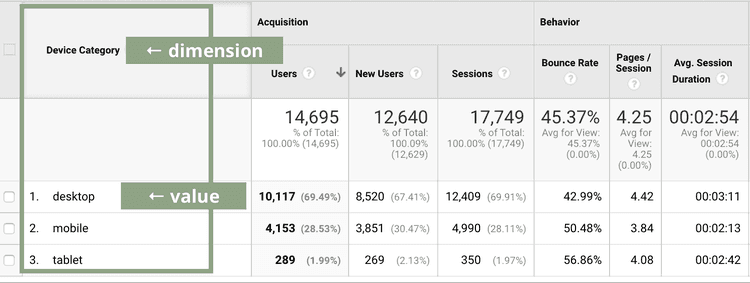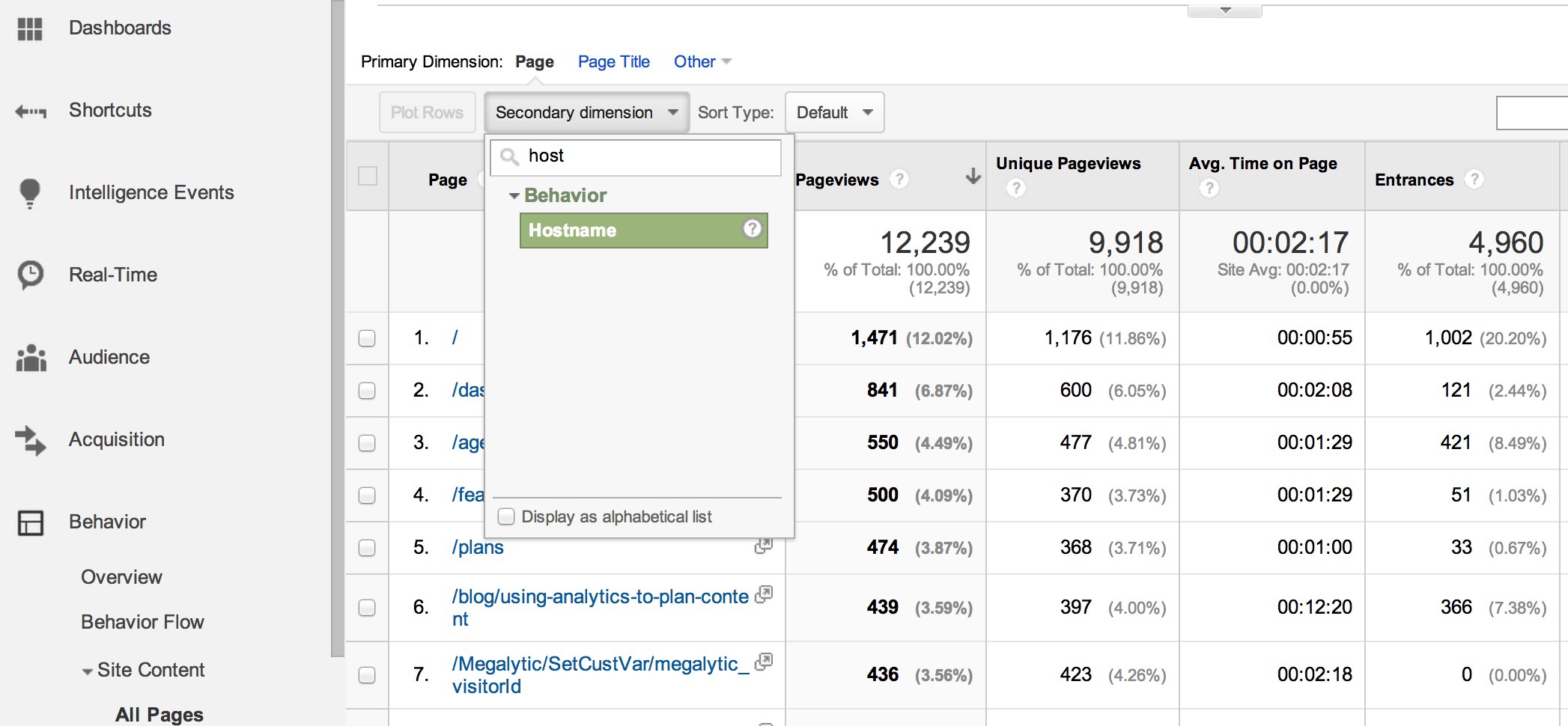Revealing the Intricacies of Additional Dimension in Google Analytics: a Comprehensive Overview on Exactly How It Works
Navigating the complex world of secondary measurements in Google Analytics is a task that requires an eager understanding of exactly how this attribute operates within the platform. As electronic landscapes evolve and data comes to be progressively important for decision-making, realizing the nuances of secondary dimensions can be the key to unlocking beneficial insights. From setting up records to delving right into advanced techniques, the journey to harnessing the power of secondary dimensions is both challenging and fulfilling. Join us as we check out the details of this tool and discover exactly how it can revolutionize your data evaluation methods.
Fundamentals of Secondary Dimension in Google Analytics
When evaluating information in Google Analytics, using the secondary dimension feature gives important insights right into the performance of various metrics. The secondary dimension enables individuals to further study their data by adding an extra layer of info to their main measurements. By doing so, analysts can gain a more detailed understanding of the factors influencing their internet site's efficiency.
In Google Analytics, the key measurements represent the primary classifications of data, such as traffic resources or tools. When a secondary measurement is applied, it gives a much deeper degree of granularity by showing one more facet of the information within the chosen key measurement. If the main measurement is 'Traffic Source,' adding an additional measurement like 'Landing Web page' can expose which specific web pages are driving web traffic from each source.
This feature is particularly valuable for identifying patterns, correlations, and patterns that might not be quickly apparent when considering the information from a solitary dimension. By leveraging the additional measurement in Google Analytics, customers can uncover beneficial understandings that can notify strategic choices and optimizations to boost web site efficiency.
Establishing Secondary Measurement Records
Increasing on the insights obtained with the application of additional dimensions in Google Analytics, the procedure of establishing second dimension records entails setting up added layers of information to even more improve the deepness of analysis (what is a “secondary dimension” in google analytics?). To start this setup, users can browse to the coverage section in Google Analytics and pick the main report they desire to dive deeper right into. Once the key record is picked, customers can click the "Second dimension" tab located over the data visualization area. From there, a drop-down food selection will certainly appear, providing a huge selection of options to choose the secondary measurement that finest matches the main information collection. Individuals can pick from a vast array of second dimension metrics such as behavior, technology, website traffic resources, and more to gain a more extensive understanding of customer interactions on their internet site. By incorporating secondary and main measurements, businesses can remove richer insights and make even more enlightened decisions to optimize their on-line presence successfully.
Leveraging Second Dimensions for Insights
Making use of additional dimensions in Google Analytics uses a critical method to drawing out nuanced insights for notified decision-making in on the internet business optimization. By integrating primary measurements with second measurements, businesses can dive much deeper into their data to uncover valuable relationships and patterns that might not be instantly obvious. By segmenting web site traffic by geographical location (primary dimension) and after that adding an additional measurement like device group, organizations can recognize if specific regions choose accessing the site by means of mobile or desktop computer.
Additionally, leveraging secondary dimensions permits organizations to get a better understanding of customer habits and choices. For example, analyzing conversion prices based upon traffic resources (primary dimension) along with the additional measurement of touchdown pages can expose which certain pages are most efficient in driving conversions for natural search web traffic versus social media sites traffic. These insights can check over here after that educate marketing approaches and web site optimization initiatives to boost overall performance and make the most of ROI.
Advanced Methods for Additional Measurements
To additionally extract elaborate insights and enhance data-driven decision-making within Google Analytics, implementing sophisticated methods for making use of second measurements is important in unlocking much deeper layers of important info for business optimization. One sophisticated strategy is using custom-made measurements and metrics, permitting the tracking of specific individual interactions or habits that are not caught by default in Google Analytics. By defining and executing customized dimensions, services can tailor their tracking to align with one-of-a-kind organization objectives and goals.
Another sophisticated technique entails using filters in combination with second dimensions. Filters enable customers to fine-tune the data presented in Google Analytics reports, giving even more targeted and appropriate understandings. By applying filters strategically with second dimensions, companies can sector data a lot more properly, bring about a more clear understanding of customer habits and performance metrics.

Optimizing Data Analysis With Second Measurements

Additionally, optimizing data analysis with additional dimensions includes trying out various mixes to identify patterns and relationships that might not be immediately evident. This iterative method allows experts to adjust their reporting and concentrate on the most appropriate information points for their business purposes. Inevitably, by leveraging additional measurements successfully, experts can enhance the precision and effectiveness of their information evaluation initiatives in Google Analytics.
Final Thought
Finally, comprehending the intricacies of second dimensions in Google Analytics is essential for getting deeper insights right into website efficiency. By establishing up secondary measurement records, leveraging them for insights, and making use of advanced methods, experts can optimize data analysis and make educated choices. This comprehensive guide has offered an in-depth summary of just how additional dimensions job and their value in enhancing the logical capacities of Google Analytics customers.
The additional dimension permits individuals to better study their information by adding an extra layer of info to their main dimensions. When a secondary dimension is applied, it provides a much deeper level of granularity by revealing one more aspect of the data within the chosen main measurement.Broadening on the insights got via the use of additional dimensions in Google Analytics, the process of establishing up secondary measurement records involves setting up added layers of data to even more improve the depth of analysis. By incorporating primary measurements with secondary dimensions, businesses can discover this info here delve much deeper into their data to reveal important correlations and patterns that might not be immediately noticeable. One method to optimize information analysis with secondary dimensions is to combine them with key dimensions to obtain a more thorough view of internet site performance.